Key Takeaways
Explore the legendary men's and women's college basketball players who delivered unforgettable March Madness performances. Discover how schools honor tournament heroes through modern recognition programs.
The Legacy of March Madness Excellence
The NCAA Basketball Tournament stands apart from regular season competition through its unique intensity, national spotlight, and winner-take-all format where single games define legacies and individual performances become immortalized in sports history.
Why March Madness Performances Matter
The Ultimate Stage for College Athletes
March Madness provides college basketball’s biggest platform, where millions watch and every possession carries championship implications. Players who excel under this pressure demonstrate character, skill, and competitive drive that separates good players from legends. Tournament performances often become defining achievements of athletic careers, remembered long after statistics from regular season games fade from memory.
Unlike professional sports where athletes compete for years, college players have limited opportunities—typically one to four tournament appearances—to prove themselves on the national stage. This scarcity creates urgency and significance around March Madness performances that professional playoff achievements rarely match.
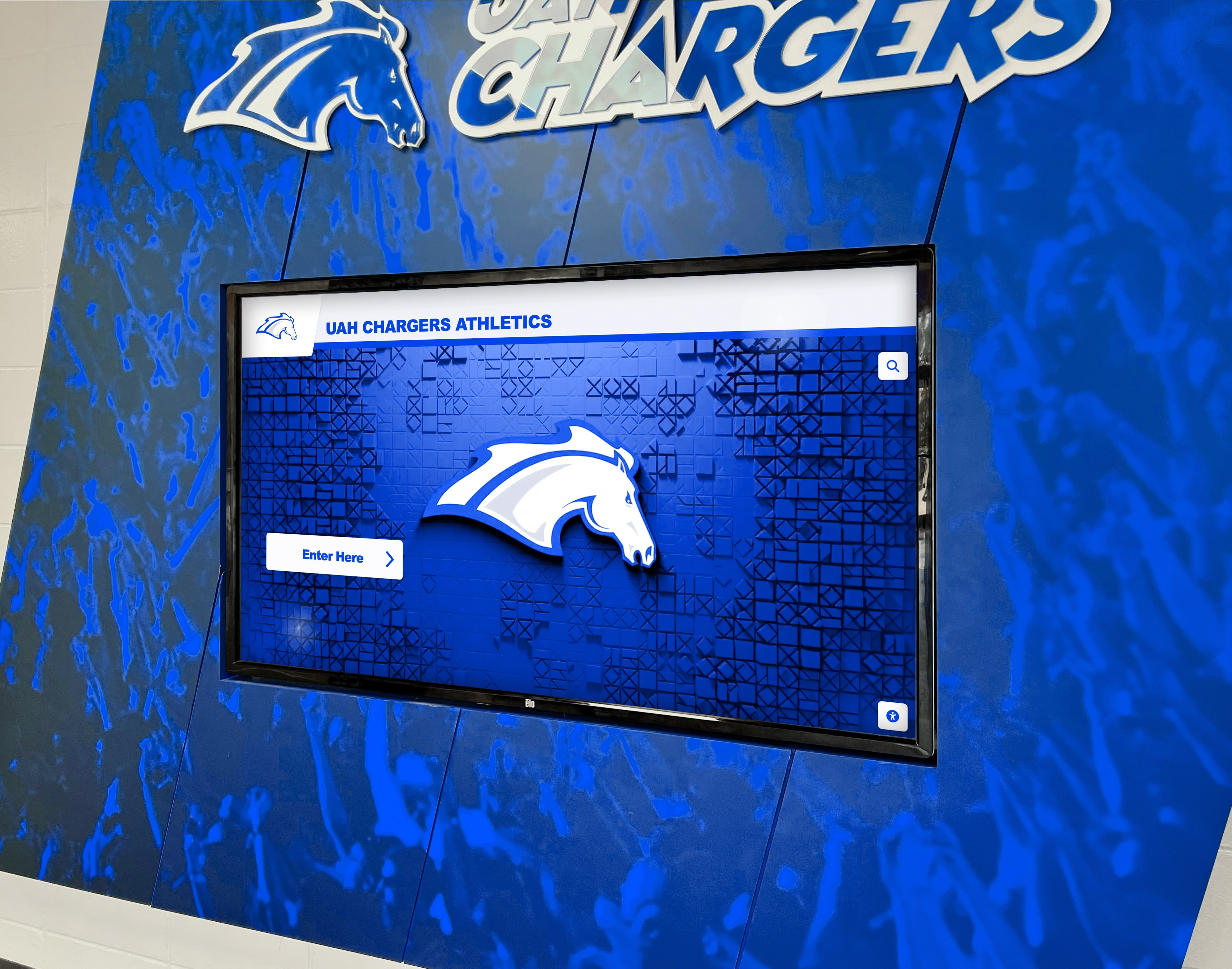
Impact Beyond the Court
Exceptional March Madness performances elevate entire athletic programs, driving recruitment of future talent, increasing alumni engagement and donations, generating media coverage and national recognition, and creating shared experiences that unite communities across generations. Schools that celebrate these achievements appropriately maximize these benefits while honoring the athletes who delivered under extraordinary pressure.
According to research on athletic achievement recognition, students who see their predecessors honored for excellence demonstrate higher performance aspirations and stronger institutional connection. Tournament legends showcased prominently inspire current players to pursue their own March Madness moments while providing tangible evidence that their program competes at championship levels.
Recognizing Both Men’s and Women’s Basketball Legends
Comprehensive recognition programs celebrate excellence across both men’s and women’s tournaments, acknowledging that extraordinary performances and championship moments transcend gender categories. The women’s tournament has produced equally compelling March Madness legends whose achievements deserve prominent celebration.
🏀 Tournament Scoring Records
Players who delivered dominant offensive performances when championships hung in the balance
🏆 Championship Game Heroes
Athletes whose title game performances secured national championships and eternal glory
🎯 Clutch Moments and Game Winners
Players remembered for buzzer-beaters, crucial plays, and performances in elimination scenarios
📊 Statistical Excellence
Record-setting performances across points, rebounds, assists, or defensive achievements
🔥 Multi-Game Tournament Dominance
Sustained excellence across multiple tournament games demonstrating complete mastery
🌟 Underdog Heroics
Players who elevated lower-seeded teams through unexpected performances that captivated nations
Legendary March Madness Performances: Men’s Basketball
The men’s NCAA tournament has produced countless unforgettable individual performances that shaped college basketball history and defined athletic legacies.
Offensive Masterpieces
Bill Walton’s Perfect Game (1973 Championship)
UCLA’s Bill Walton delivered arguably the greatest championship game performance ever, shooting 21-22 from the field while scoring 44 points in the 1973 title game against Memphis State. This near-perfect offensive efficiency under championship pressure remains unmatched decades later, exemplifying dominance when stakes couldn’t be higher.
Walton’s performance combined scoring volume with extraordinary accuracy, demonstrating complete offensive mastery rather than simply taking numerous shots. This efficiency-focused dominance provides a model for excellence that coaches reference when teaching championship mindset.
Glen Rice’s 1989 Tournament Explosion
Michigan’s Glen Rice averaged 30.7 points across six tournament games in 1989, culminating in a 31-point championship game performance against Seton Hall. His sustained scoring excellence throughout the tournament—not just a single game—demonstrated the endurance and consistency required for complete March Madness dominance.
Rice’s achievement illustrates how tournament legends emerge through sustained excellence rather than isolated moments. His six-game scoring rampage created a championship run that Michigan fans celebrate generations later through digital recognition displays that preserve tournament achievements permanently.

Austin Carr’s Scoring Records (1970)
Notre Dame’s Austin Carr owns three of the top five single-game tournament scoring performances, including a 61-point explosion against Ohio in 1970. Though Notre Dame didn’t win the championship, Carr’s individual brilliance remains legendary, demonstrating that historic performances transcend team outcomes when dominance reaches extraordinary levels.
Iconic Moments and Clutch Performances
Christian Laettner’s Perfect Game (1992 Elite Eight)
Duke’s Christian Laettner achieved perfection in the 1992 Elite Eight against Kentucky, shooting 10-10 from the field, 10-10 from the free-throw line, and hitting the game-winning turnaround jumper at the buzzer in overtime. This combination of perfect shooting, clutch delivery, and dramatic timing created perhaps the single most celebrated March Madness moment.
Laettner’s performance exemplifies how tournament legends emerge through pressure execution rather than merely statistical accumulation. The moment remains central to Duke basketball identity decades later, regularly featured in institutional recognition programs that honor program-defining achievements.

Kemba Walker’s 2011 Championship Run
Connecticut’s Kemba Walker scored 130 points across five Big East tournament games, then added 145 points in six NCAA tournament games during UConn’s 2011 championship run. This 11-game stretch of March dominance ranks among the most complete tournament performances ever, combining individual scoring excellence with championship team success.
Walker’s achievement demonstrates how modern March Madness legends sustain excellence across extended tournament runs spanning multiple weeks. Programs honoring such achievements benefit from interactive digital displays that can present comprehensive statistics, game highlights, and narrative context that physical plaques cannot accommodate.
Danny Manning’s 1988 “Danny and the Miracles” Championship
Kansas’s Danny Manning averaged 27.2 points and 5.8 rebounds across six tournament games, culminating in a 31-point, 18-rebound championship game performance that carried an underdog Kansas team to an unlikely title. Manning’s performance exemplified how individual excellence can elevate entire teams beyond their expected capabilities.
Complete Player Dominance
Elvin Hayes’s 1968 Tournament Excellence
Houston’s Elvin Hayes averaged 29.5 points and 14.8 rebounds per game during the 1968 tournament, showcasing complete two-way dominance. His combination of elite scoring and rebounding demonstrated the comprehensive skill required for tournament greatness beyond isolated offensive explosions.
Anthony Davis’s Defensive Mastery (2012)
Kentucky’s Anthony Davis won the 2012 tournament while averaging 6 blocks per game, redefining March Madness dominance through defensive excellence rather than scoring. His shot-blocking prowess altered opponents’ offensive approaches throughout the tournament, demonstrating that tournament legends emerge through various skill paths.
Davis’s achievement reminds programs that basketball recognition displays should celebrate diverse excellence types—defensive mastery, playmaking, rebounding—rather than focusing exclusively on scoring statistics.
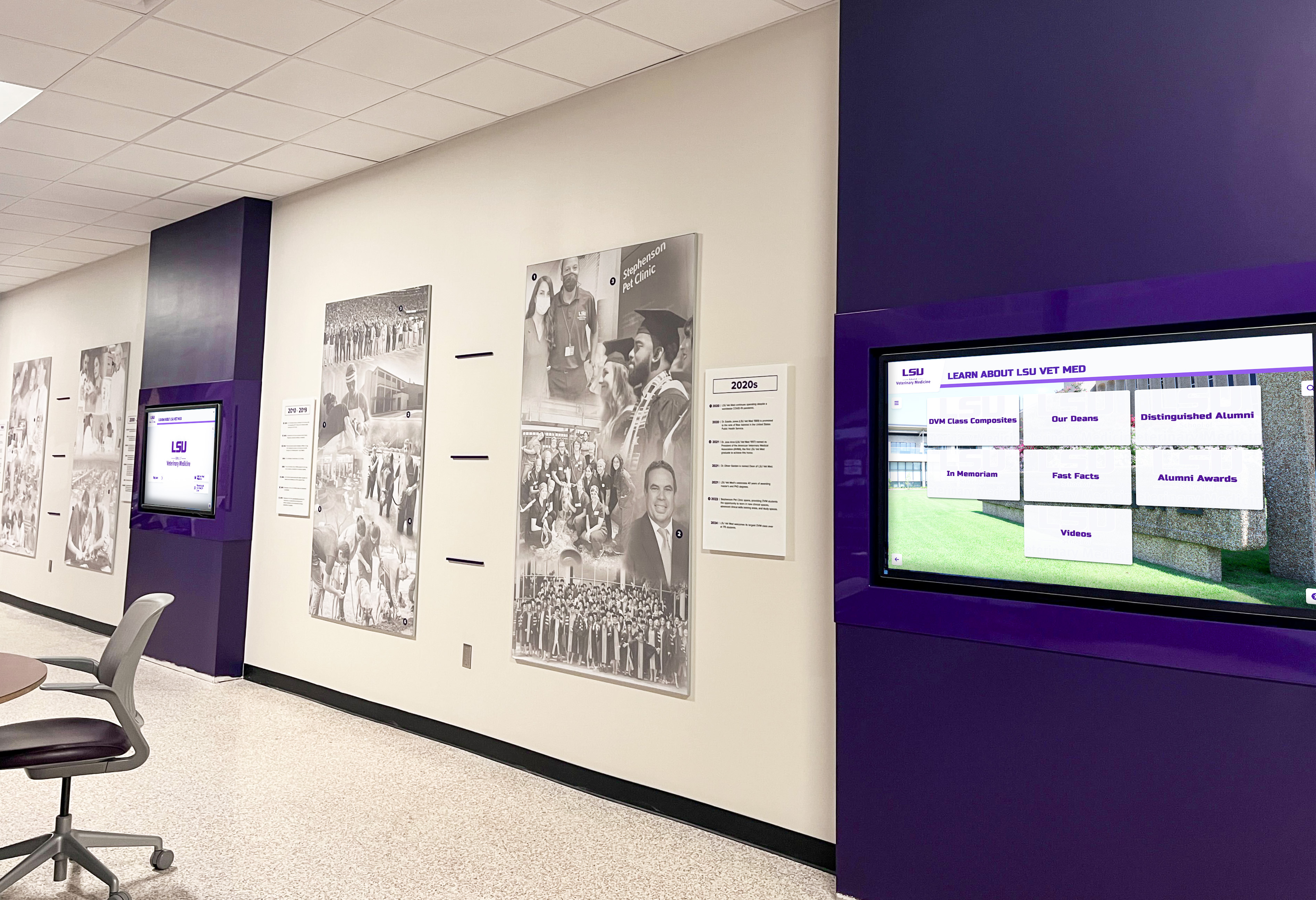
Legendary March Madness Performances: Women’s Basketball
The women’s NCAA tournament has produced equally compelling March Madness legends whose performances deserve celebration alongside their male counterparts in comprehensive recognition programs.
Championship Game Dominance
Sheryl Swoopes’s Record-Breaking Championship (1993)
Texas Tech’s Sheryl Swoopes scored 47 points in the 1993 championship game against Ohio State, setting a title game scoring record that stands decades later. Her performance carried Texas Tech to its only national championship while establishing Swoopes as one of women’s basketball’s all-time greats.
Swoopes’s achievement demonstrates how single tournament performances can define both individual legacies and institutional athletic identities. Texas Tech’s celebration of this moment through permanent recognition strengthens program tradition while inspiring current players to pursue their own March Madness greatness.
Maya Moore’s Multiple Championship Excellence (2009, 2010)
Connecticut’s Maya Moore delivered dominant performances across multiple championship games, scoring 23 points in the 2009 final and adding 20 points, 12 rebounds, and 7 assists in 2010. Her sustained excellence across multiple title games demonstrated championship consistency that separates good players from generational talents.
Breanna Stewart’s Four Championships (2013-2016)
Connecticut’s Breanna Stewart achieved unprecedented March Madness success, winning four consecutive championships while earning four consecutive Final Four Most Outstanding Player awards. This sustained tournament excellence across an entire college career remains unmatched in either men’s or women’s basketball.
Stewart’s achievement illustrates how modern recognition programs must accommodate evolving athletic stories, updating profiles as athletes achieve new milestones. Digital recognition systems enable this ongoing celebration that static plaques cannot match.
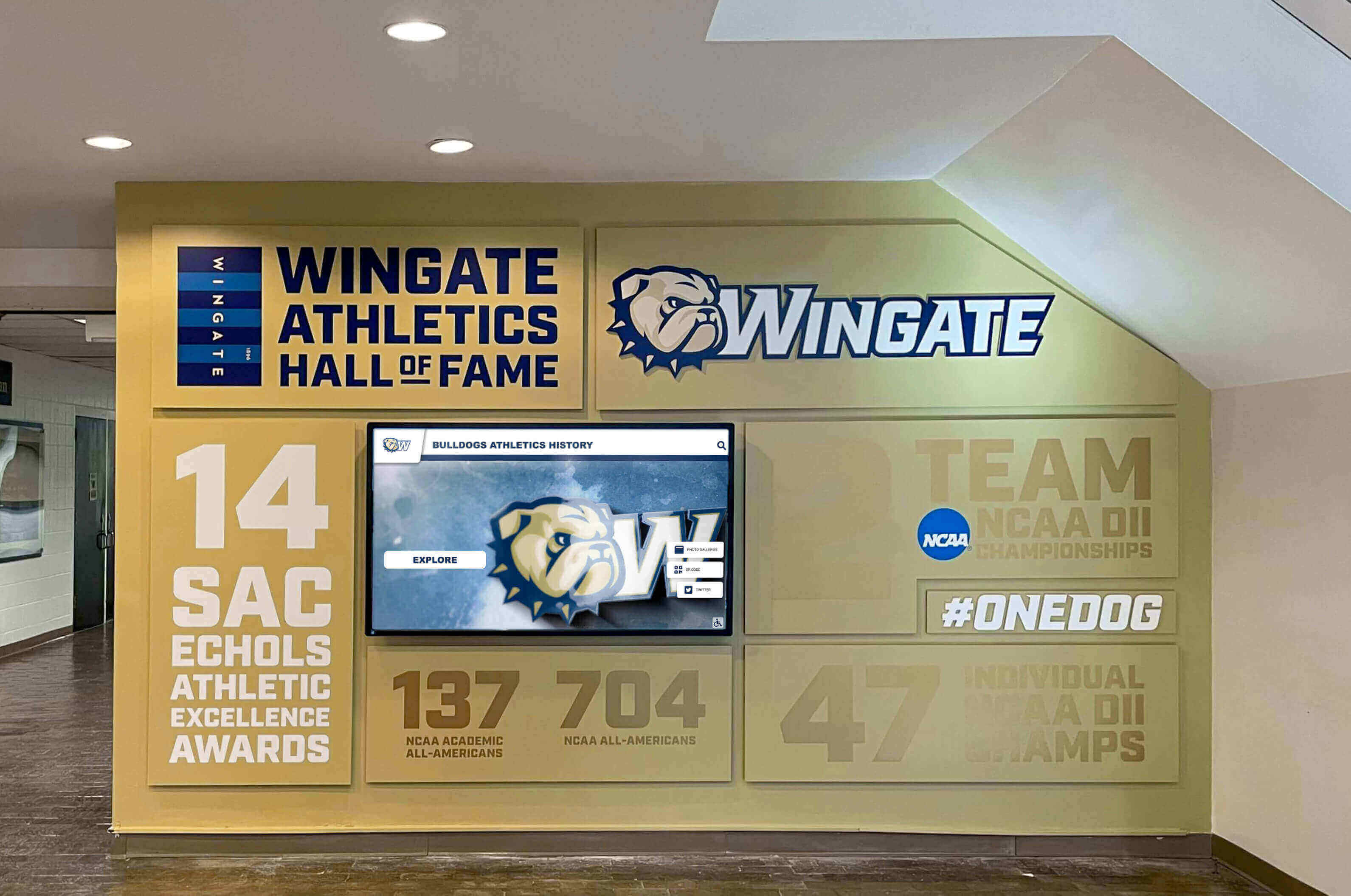
Tournament Scoring Excellence
Diana Taurasi’s 2003 Championship Performance
Connecticut’s Diana Taurasi scored 28 points in the 2003 championship game while shooting 7-15 from three-point range, dominating from beyond the arc to secure UConn’s fourth title. Her perimeter excellence showcased how modern basketball skills translate to March Madness success.
Chamique Holdsclaw’s 1998 Tournament Dominance
Tennessee’s Chamique Holdsclaw averaged 23.3 points and 8.5 rebounds across six tournament games during Tennessee’s third consecutive championship in 1998. Her sustained excellence throughout the tournament exemplified complete player capabilities across scoring, rebounding, and leadership.
Underdog Tournament Heroics
Arike Ogunbowale’s Consecutive Buzzer-Beaters (2018)
Notre Dame’s Arike Ogunbowale hit game-winning shots in consecutive games during the 2018 tournament—a semi-final buzzer-beater against UConn followed by another game-winner in the championship game against Mississippi State. These consecutive clutch performances created instant March Madness legend status.
Ogunbowale’s achievement demonstrates that iconic moments emerge through pressure execution in decisive situations. Programs celebrating such achievements through touchscreen recognition displays can incorporate video highlights that bring these dramatic moments to life for viewers who weren’t present.
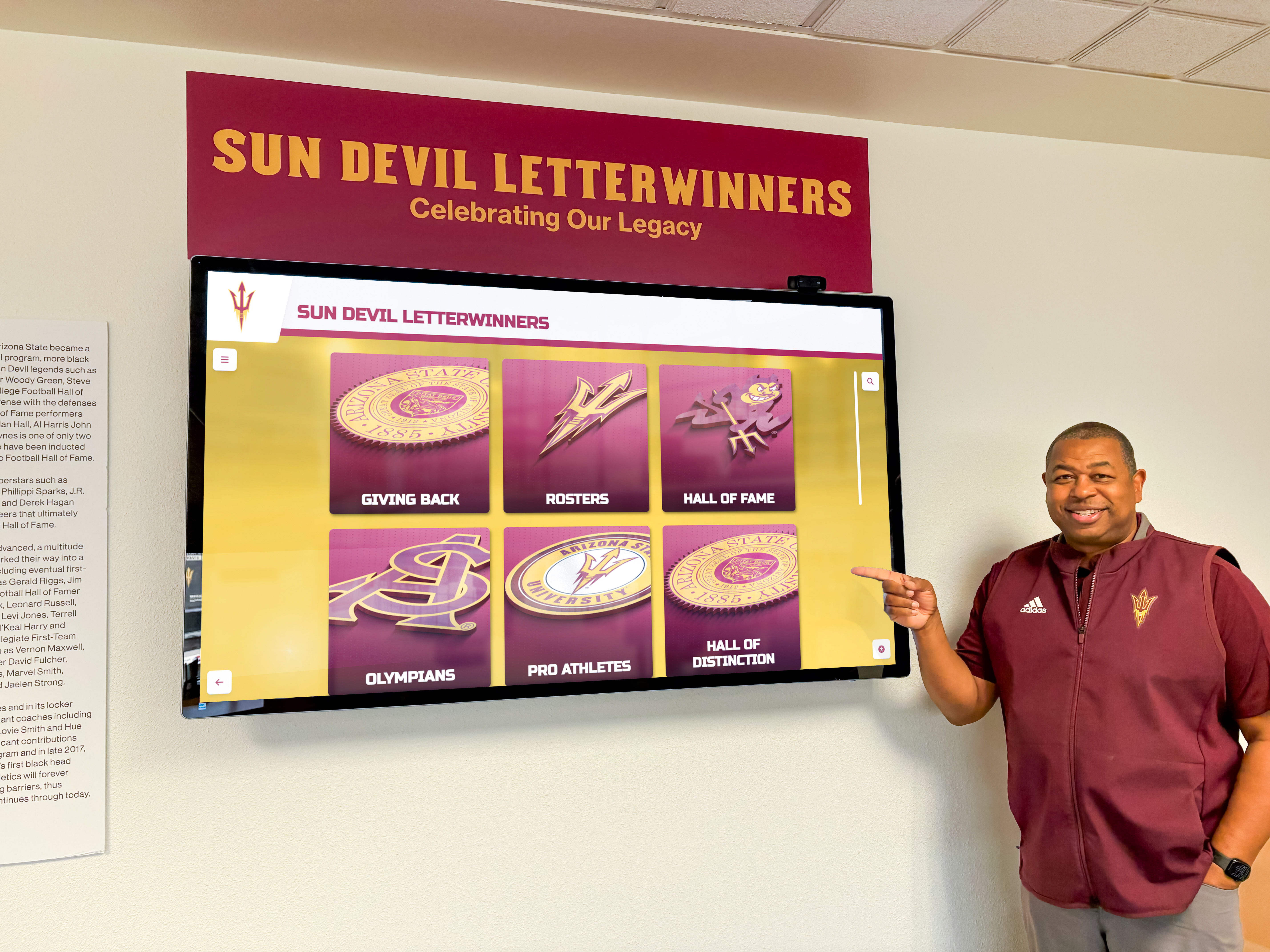
Modern Recognition Solutions for Tournament Legends
Technology has transformed how schools celebrate March Madness excellence, enabling rich storytelling and interactive experiences that static trophy cases cannot provide.
Interactive Digital Recognition Displays
Modern digital hall of fame systems address every limitation of traditional recognition while introducing capabilities specifically valuable for celebrating tournament achievements:
Multimedia Tournament Storytelling: Digital displays accommodate comprehensive game recaps, video highlights of iconic moments, statistical breakdowns across entire tournament runs, play-by-play descriptions of crucial sequences, and contextual information about opponent quality and game stakes. This rich media creates emotional connections that text-only plaques cannot achieve.
Searchable Tournament Archives: Visitors can filter achievements by specific tournaments, browse championship game performances specifically, search for individual player names or specific opponents, and explore tournament records and statistical achievements. This interactivity dramatically increases engagement compared to static displays.
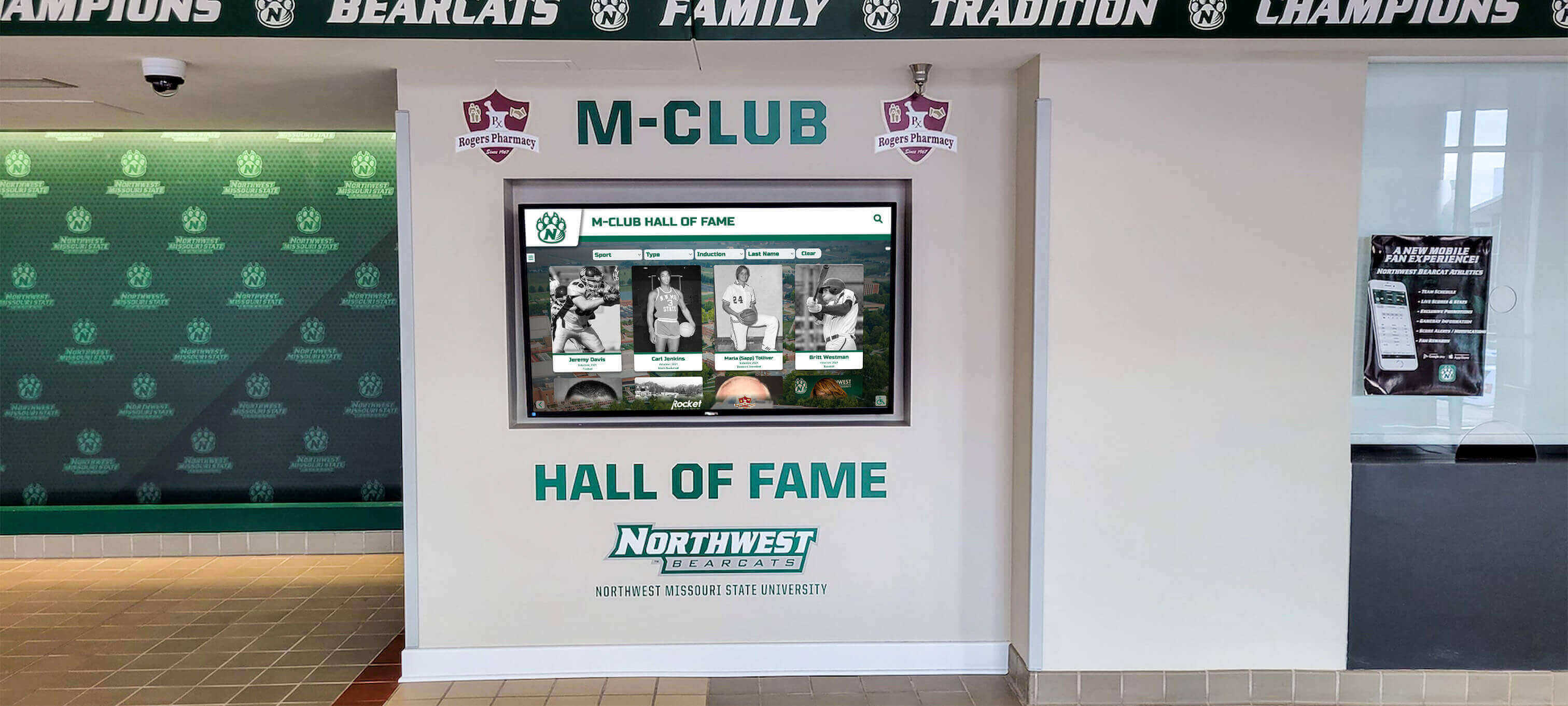
Ongoing Updates and Additions: As new March Madness legends emerge each season, updating digital profiles takes minutes rather than requiring expensive physical modifications. This ensures recognition remains current and celebrates the latest tournament heroes alongside historic legends.
Team and Individual Recognition Integration: Digital systems can present both individual player achievements and team tournament success within the same platform, showing how individual excellence contributed to championship runs while celebrating collective team accomplishments.
Solutions like Rocket Alumni Solutions provide platforms specifically designed for athletic recognition, combining intuitive content management with robust display technology that ensures reliable operation in high-traffic athletic facilities.
Comprehensive Recognition Program Elements
Tournament Performance Categories: Structure recognition to celebrate diverse March Madness excellence:
- Single-game scoring performances above specific thresholds
- Championship game excellence and Most Outstanding Player awards
- Tournament average leaders across scoring, rebounds, assists, blocks, steals
- Buzzer-beaters and game-winning shots in elimination games
- Complete tournament runs leading teams to championships
- Statistical records set during tournament play
Historical Context and Evolution: Effective displays provide context showing how March Madness has evolved—rule changes affecting play styles, tournament expansion increasing competitive depth, and changing athletic capabilities over decades. This historical perspective helps viewers appreciate achievements relative to their era.
Integration with Broader Athletic Recognition: Tournament excellence should integrate into comprehensive athletic hall of fame programs that celebrate complete careers rather than existing as isolated March Madness recognition. Digital systems enable this integration while allowing focused exploration of tournament achievements specifically.

Creating Compelling March Madness Recognition Content
Recognition technology provides the platform, but compelling content drives engagement and properly honors tournament legends through authentic storytelling.
Essential Profile Elements for Tournament Legends
Game-by-Game Tournament Documentation: Chronicle entire tournament runs with game-by-game breakdowns showing progressive achievement across rounds. Include opponent information, score lines, individual statistics for each game, key plays and decisive moments, and team context explaining the stakes.
Video Highlights and Iconic Moments: For digital displays, leverage game footage of signature plays, buzzer-beaters shown from multiple angles, championship celebrations following victories, post-game interviews capturing immediate reactions, and documentary-style retrospectives with player reflections years later.
Statistical Analysis and Records: Present comprehensive statistics showing tournament performance in context:
- Comparison to tournament records and historical benchmarks
- Shooting percentages and efficiency metrics demonstrating mastery
- Advanced statistics showing complete impact beyond basic box scores
- Career tournament averages showing sustained excellence across multiple years
Personal Narratives and Reflections: Include first-person accounts from players describing preparation, pressure management, memorable moments, and career impact of tournament performances. These authentic voices create personal connections that pure statistics cannot generate.
For guidance on developing engaging recognition content, explore resources on creating video content for digital hall of fame displays that properly celebrate athletic achievement.
Content Development Strategies
Athletic Department Archives: Leverage existing institutional resources including game footage from athletic department video libraries, historical statistics from media guides and record books, newspaper coverage from student and local publications, and photography collections documenting tournament appearances.
Player Engagement and Interviews: Reach out to former players featured in recognition programs, requesting memories about specific tournament moments, advice for current players pursuing March Madness success, reflections on how tournament performances influenced their lives, and permission to use personal photographs or memorabilia.
Fan and Alumni Contributions: Engage the broader community through submission opportunities for fan photographs from tournament games, memorable personal stories about watching historic performances, and crowdsourced identification of players in historical team photographs.
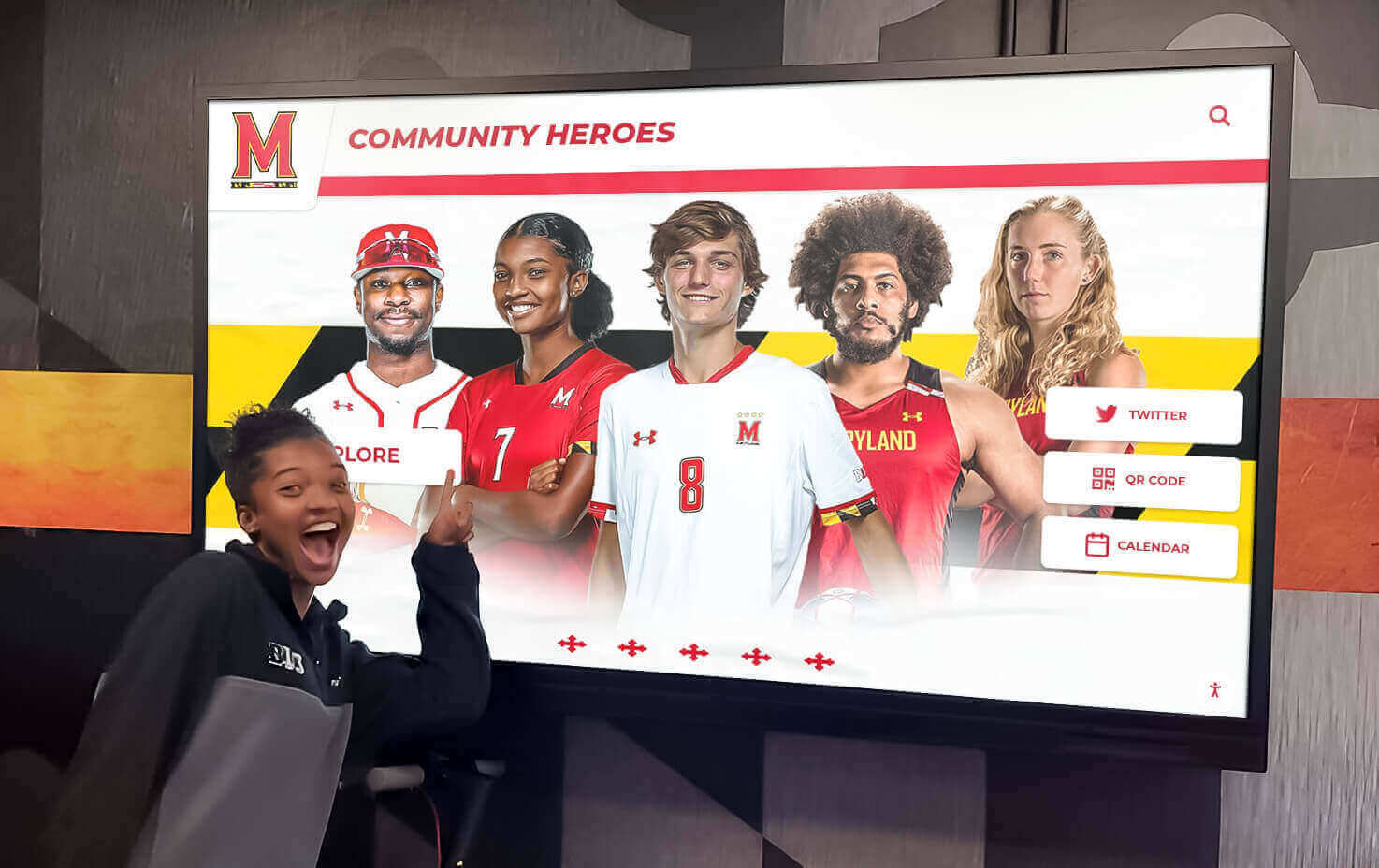
Integrating March Madness Recognition into Campus Culture
Maximum impact occurs when tournament recognition integrates comprehensively into athletic program culture, student life, and institutional identity rather than existing as isolated displays.
Strategic Display Placement
High-Traffic Athletic Facilities: Position recognition displays in athletic center lobbies where teams and visitors congregate, practice facility entrances where current players see legends daily, locker room areas reinforcing championship culture, and arena concourses where fans engage during games.
Academic and Campus Locations: Extend recognition beyond athletic facilities through student union installations reaching broader student populations, library displays integrating athletics into academic environments, admissions office exhibits showcasing program excellence to recruits, and alumni center placements connecting past and present generations.
Game Day Integration and Fan Engagement
In-Game Recognition: Incorporate tournament legends into game day experiences through halftime ceremonies honoring March Madness heroes, video board features highlighting historic tournament moments, public address announcements educating fans about program tournament history, and commemorative programs celebrating March Madness anniversaries.
Social Media Campaigns: Leverage digital recognition content across social platforms:
- #MarchMadnessMemories series featuring different tournament performances weekly
- Throwback Thursday posts with historical tournament photographs and statistics
- Countdown campaigns building toward tournament selection highlighting past successes
- Interactive polls asking fans to vote on greatest March Madness moments
Educational Programming: Create learning opportunities around tournament history through:
- Panel discussions with former players sharing tournament experiences
- Documentary film screenings examining championship runs
- Statistical analysis workshops exploring tournament performance data
- Basketball clinics where legends teach skills that drove March Madness success
For comprehensive guidance on building program recognition culture, review resources on showcasing championship teams that maximize visibility and impact.
Recruitment and Athletic Program Marketing
Prospective Student-Athlete Engagement: Use March Madness recognition prominently in recruitment through campus tour integration highlighting tournament tradition, recruiting materials featuring March Madness success, social media campaigns showing championship culture, and direct conversations with recruits about program tournament history.
Recruits evaluating programs seek evidence of championship potential, competitive culture, and pathway to March Madness exposure. Comprehensive tournament recognition provides tangible proof that programs compete at elite levels while celebrating players who achieved under national spotlight.
Differentiating Program Identity: March Madness excellence distinguishes programs in competitive recruitment landscapes. Recognition that prominently celebrates tournament success signals championship culture, national competitive level, development of NBA and WNBA talent, and tradition of pressure performance excellence.
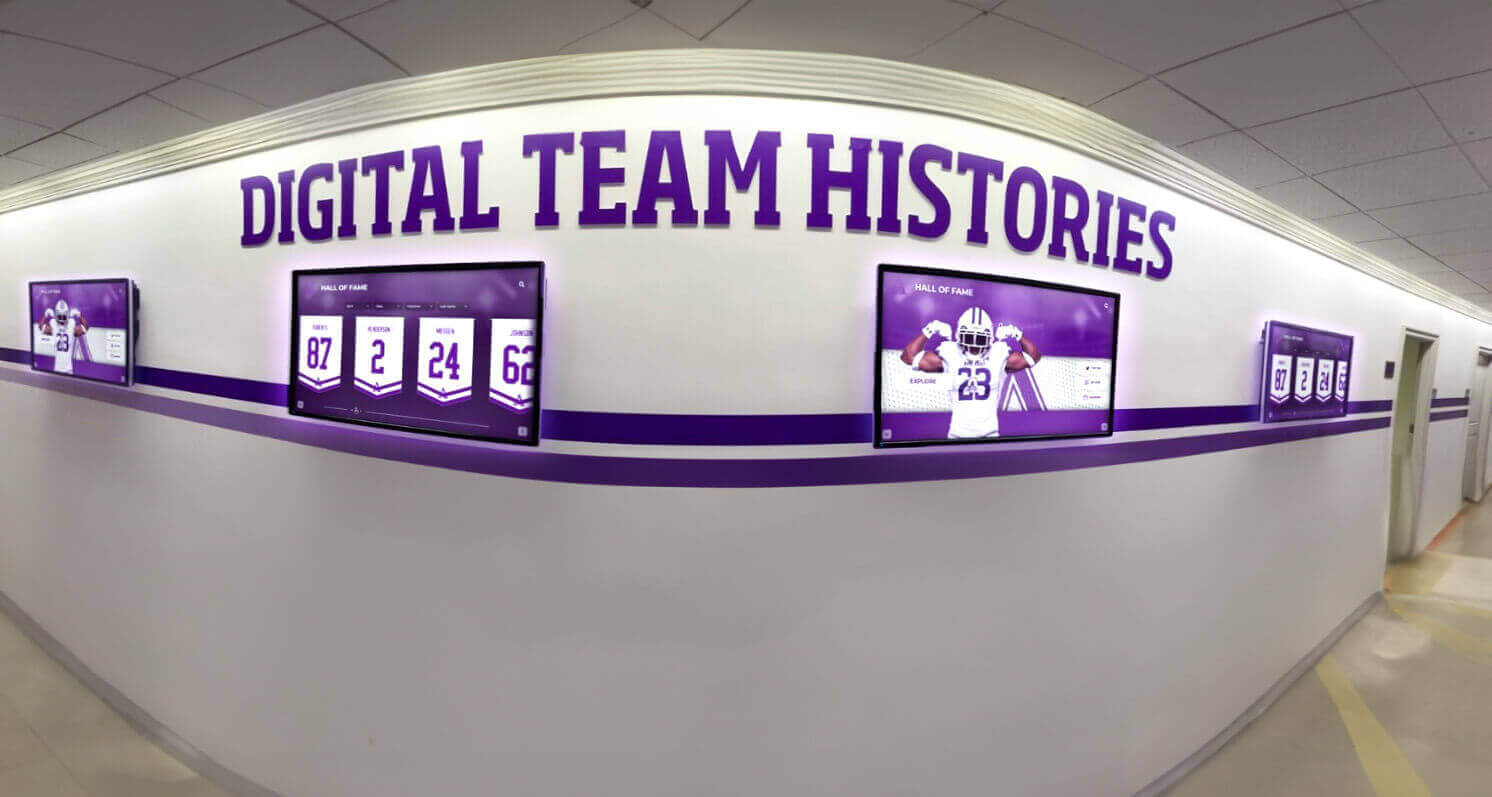
Technology Implementation and Management
Successfully implementing digital March Madness recognition requires thoughtful technology planning ensuring reliable operation, intuitive management, and long-term sustainability.
Hardware Considerations for Athletic Environments
Commercial-Grade Durability: Athletic facilities require displays designed for continuous high-traffic operation:
- Commercial touchscreens rated for extended daily use rather than consumer products
- Protective enclosures for high-traffic areas preventing accidental damage
- Anti-glare screens maintaining visibility under arena lighting conditions
- Climate-controlled installations protecting equipment from temperature and humidity extremes
Screen Size and Viewing Distance: Match hardware specifications to installation environments—larger screens for spacious arena concourses, standard displays for smaller lobby areas, portrait orientation maximizing vertical space in narrow corridors, and landscape orientation accommodating video content effectively.
Software Platform Capabilities
Effective touchscreen software for athletic recognition should provide:
Intuitive Content Management: Non-technical athletic staff must easily add new tournament performances each season, update statistics as records change, upload video highlights and photographs, and organize content by tournament year, player, or achievement type without requiring IT involvement.
Flexible Design Customization: Software should accommodate school colors, logo integration, basketball-specific templates, and statistical display formats that reflect sport-specific needs. Athletic branding reinforces program identity while maintaining visual consistency.
Powerful Search and Navigation: Visitors need multiple ways to explore tournament history—player name search, year filtering showing specific tournament editions, achievement type browsing, statistical leaderboards, and random discovery encouraging serendipitous exploration.

Analytics and Engagement Tracking: Built-in metrics reveal which tournament performances generate most interest, how visitors navigate content, peak usage times correlating with recruitment visits or game days, and long-term engagement trends demonstrating program value.
Solutions like Rocket Alumni Solutions provide comprehensive platforms specifically refined for athletic recognition through hundreds of implementations across college programs nationwide.
Measuring Success and Demonstrating Value
March Madness recognition programs represent significant investments. Comprehensive evaluation demonstrates value while identifying improvement opportunities.
Quantitative Success Metrics
Display Engagement Analytics: For digital systems, track daily interactions during tournament season versus off-season, average session duration showing engagement depth, most-viewed performances revealing which legends resonate most, and search query patterns indicating visitor interests.
Recruitment Impact: Measure prospective student-athlete feedback about recognition displays during official visits, verbal commitments mentioning program tradition as decision factor, social media engagement from recruits with March Madness content, and coach reports about recognition program value in recruitment conversations.
Fan and Alumni Engagement: Monitor attendance trends at recognition unveiling events, alumni donations following March Madness recognition initiatives, social media impressions and engagement with tournament content, and website traffic to March Madness pages during tournament season.
Qualitative Assessment and Feedback
Current Student-Athlete Perspectives: Gather insights through focus groups discussing March Madness recognition influence on motivation, surveys asking players about display awareness and inspirational impact, and anecdotal reports from coaches about cultural influence of celebrating tournament excellence.
Community and Fan Reactions: Collect feedback through social media sentiment analysis around recognition content, comments from fans during game day recognition ceremonies, media coverage praising institutional celebration of tournament history, and testimonials from recruits and families about recognition program impressions.
For detailed evaluation frameworks, review guidance on measuring ROI for digital recognition programs that demonstrates value across multiple dimensions.
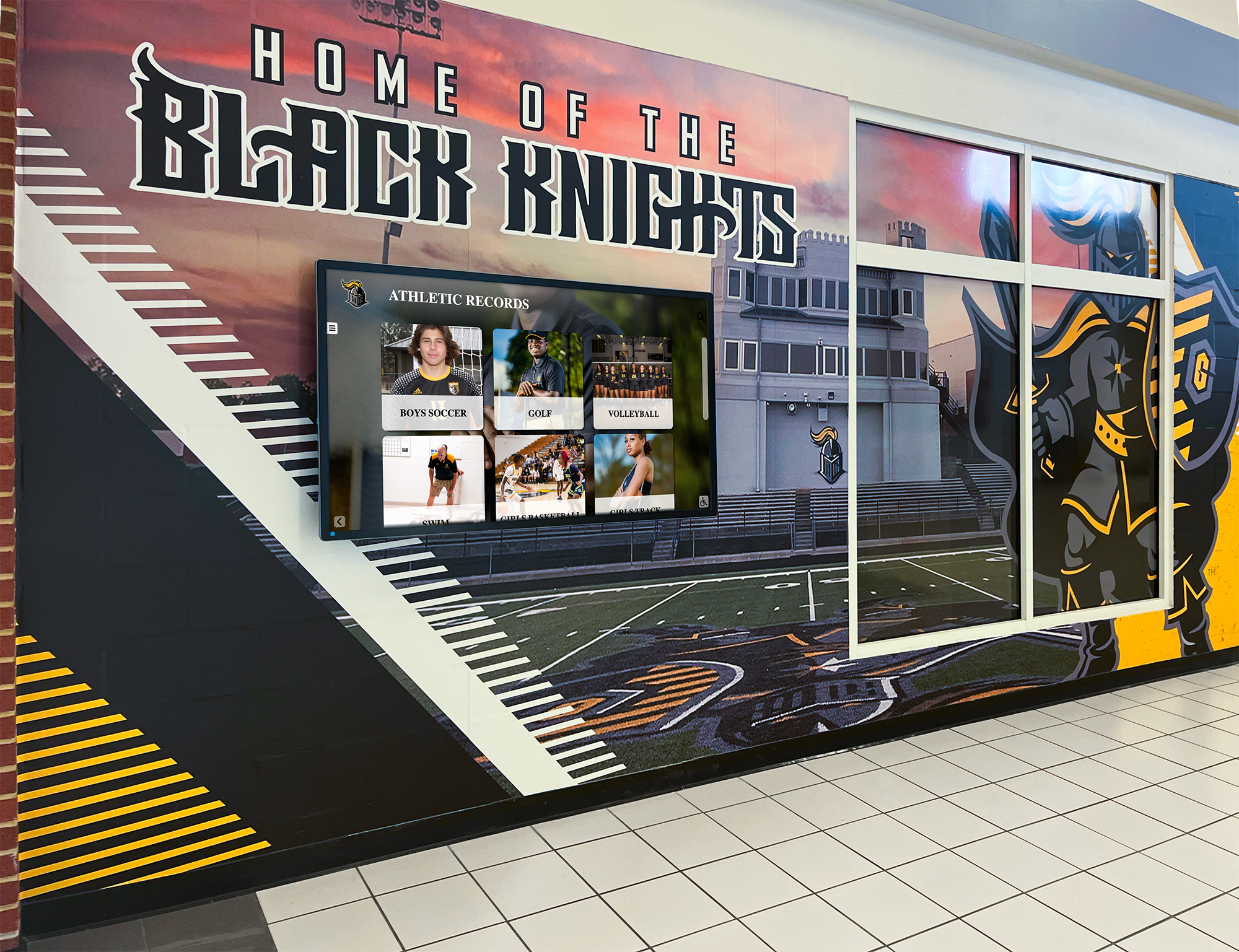
Building Your March Madness Recognition Program
Institutions at any stage can develop meaningful tournament recognition that celebrates excellence while inspiring future generations.
Getting Started with Limited Resources
Phase One: Document Tournament History: Begin by compiling comprehensive records of institutional March Madness participation—tournament appearances by year, win-loss records and opponent information, individual player statistics from tournament games, championship achievements and Final Four appearances, and notable performances and memorable moments.
Phase Two: Identify Key Legends: Prioritize initial recognition by selecting players with most significant March Madness achievements—championship team members receiving highest priority, record-setting performances meriting individual celebration, and sustained tournament excellence across multiple years.
Phase Three: Develop Initial Content: Create baseline recognition materials including biographical profiles of selected players, game-by-game tournament statistics and narratives, photographs from tournament games and celebrations, and video highlights where available from archived footage.
Scaling Recognition Programs Over Time
Traditional Foundation
Start with basic plaques or banners in athletic facilities recognizing tournament participants and champions
Digital Enhancement
Add single touchscreen display providing searchable tournament history and detailed player profiles
Multimedia Integration
Incorporate video highlights, audio interviews, and rich media creating immersive experiences
Multiple Locations
Expand displays to additional campus locations maximizing visibility and community engagement
Online Extension
Create web-based tournament recognition accessible to alumni and fans worldwide beyond physical campus
Comprehensive System
Integrate March Madness recognition into complete athletic hall of fame celebrating all sport achievements
This phased approach enables institutions to begin celebrating March Madness excellence immediately while building toward comprehensive recognition programs as resources allow.
Conclusion: Honoring March Madness Excellence for Future Generations
March Madness represents college basketball’s ultimate proving ground, where players demonstrate extraordinary skill under immense pressure and create moments that define institutional athletic identities for generations. From Bill Walton’s perfect championship game to Breanna Stewart’s unprecedented four consecutive titles, from Christian Laettner’s buzzer-beater to Arike Ogunbowale’s consecutive game-winners, these performances transcend statistics to become cultural touchstones that unite communities and inspire future athletes.
Properly recognizing these tournament legends through comprehensive programs serves multiple vital purposes—honoring athletes who delivered under extraordinary pressure, inspiring current players to pursue their own March Madness greatness, strengthening recruiting efforts through demonstrated championship culture, engaging alumni who share tournament memories, and preserving institutional athletic heritage for future generations.
Modern technology from providers like Rocket Alumni Solutions makes comprehensive March Madness recognition achievable for programs of all sizes. Digital recognition platforms enable unlimited capacity for celebrating tournament heroes, rich multimedia storytelling worthy of legendary performances, ongoing updates as new March Madness legends emerge, and interactive experiences that engage communities year-round rather than only during tournament season.
Whether implementing interactive touchscreen displays that tell complete tournament stories through video and statistics, creating memorable induction ceremonies that honor March Madness legends appropriately, or leveraging recognition programs strategically for recruitment and alumni engagement, the foundation remains consistent—genuine celebration of excellence that honors extraordinary achievement while inspiring future generations to create their own March Madness moments.

Ready to Transform Your Basketball Recognition Program?
Discover how modern recognition technology can elevate your celebration of March Madness excellence and basketball achievement. Explore comprehensive solutions for creating digital trophy cases that showcase tournament success, learn about digital record boards that highlight statistical achievements, or understand how to build recognition programs that inspire student-athletes while honoring excellence.
Visit Rocket Alumni Solutions to discover purpose-built platforms specifically designed for athletic recognition, combining intuitive content management with robust display technology that ensures reliable operation in demanding athletic environments. With proven results across hundreds of schools and universities nationwide, Rocket Alumni Solutions helps institutions create recognition programs that strengthen athletic culture, support recruitment efforts, and build lasting program pride.
Contact us today to discuss your vision for celebrating March Madness legends and discover how the right recognition program can transform your basketball program’s culture while connecting generations through shared tournament excellence.



































